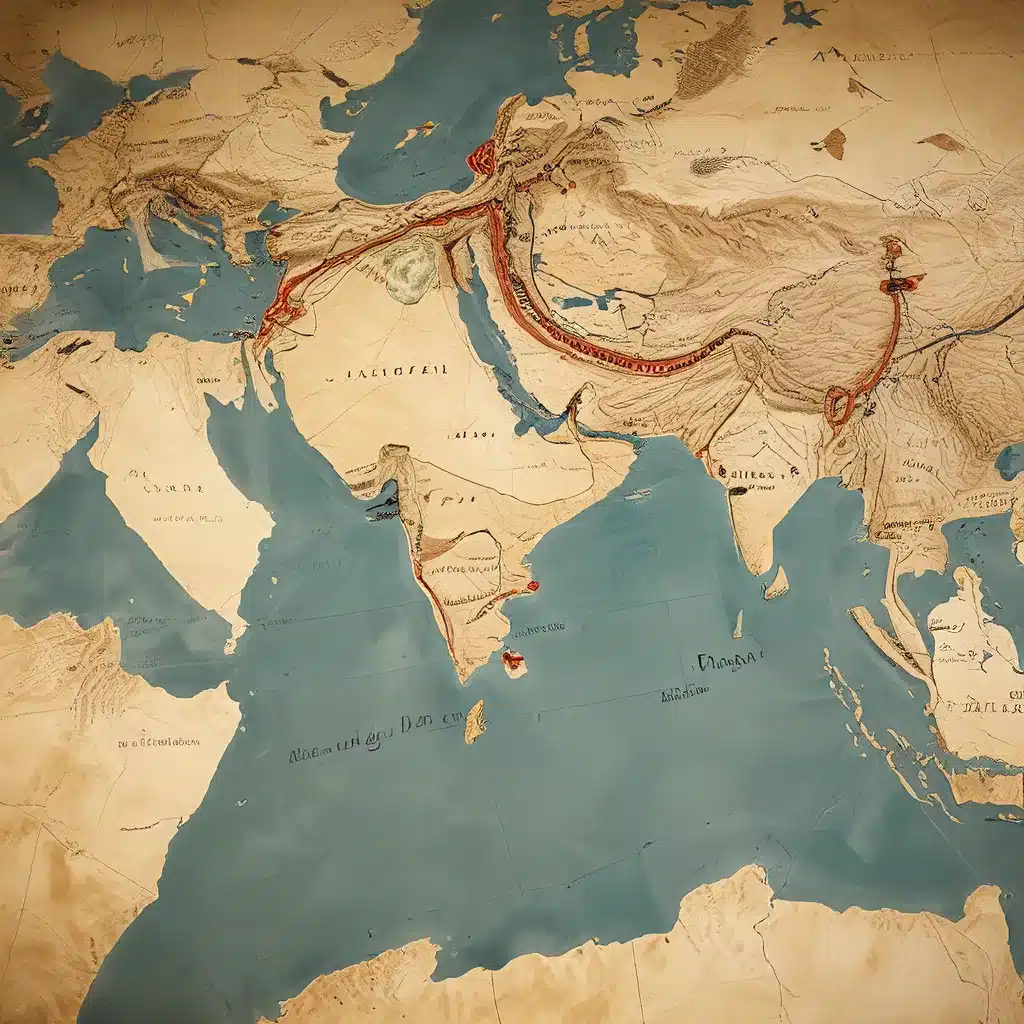
For centuries, the Silk Road has captured the imagination of historians, archaeologists, and adventurers alike. This vast network of interconnected trade routes, spanning over 6,000 kilometers, facilitated the exchange of goods, ideas, and cultures between the civilizations of the East and West. From the majestic Chinese empires to the thriving Mediterranean societies, the Silk Road left an indelible mark on the course of human history.
The Birth of the Silk Road: Ancient Beginnings
The origins of the Silk Road can be traced back to the Han Dynasty in China, around 206 BCE – 220 CE. Initially established as a means to transport silk, which was highly sought after by the wealthy elites in the West, the trade route gradually expanded to include a diverse array of valuable commodities. Spices, precious metals, gemstones, and even cultural artifacts found their way along these ancient pathways, forging a vast network of commercial and cultural exchange.
As the Silk Road evolved, various empires and civilizations, such as the Parthians in Central Asia and the Kushans and Sassanids in later eras, played a crucial role in shaping and expanding this trading network. The strategic control of key sections of the route allowed these civilizations to reap the benefits of the lucrative trade, while also facilitating the transmission of knowledge and innovation between the East and West.
Cultural Odyssey: Uniting East and West
The Silk Road was not merely a conduit for trade; it was a bridge between the East and the West, where cultures intermingled and ideas transcended borders. Buddhist monks from India traveled to China, spreading their teachings along the way, while Greek, Persian, and Indian philosophies enriched the intellectual landscape of the Middle Kingdom.
Scholars, traders, and pilgrims traversed the vast deserts, mountains, and seas, creating a cosmopolitan world where diversity thrived. The exchange of knowledge, art, and technology transformed the societies along the Silk Road, leading to a cross-pollination of ideas and the emergence of new cultural practices.
Technological Marvels and Innovations
The Silk Road was not only a conduit for cultural exchange but also a facilitator of technological advancements. The exchange of knowledge and innovations between civilizations along the route was truly remarkable. One of the most significant examples is the transmission of papermaking from China to the West, which revolutionized the way knowledge was recorded and disseminated.
Similarly, the compass, a crucial navigational tool, found its way from China to the West, transforming exploration and the expansion of trade networks. These technological innovations, alongside others, accelerated human progress and heralded a new era of interconnectedness, profoundly shaping the course of history.
Diplomacy and Conflict: The Human Drama
As trade flourished along the Silk Road, so did diplomatic relations between the empires and kingdoms that controlled the various sections of the route. Rome, Parthia, and China exchanged gifts, negotiated treaties, and fostered cooperation, strengthening the bonds between civilizations.
However, the Silk Road was not without its challenges. The Han Dynasty’s military expeditions against nomadic tribes, such as the Xiongnu, disrupted the peace, while the fall of empires reshaped the geopolitical landscape of the region. Despite these conflicts, the resilience of the Silk Road communities endured, as they maintained a delicate balance between diplomacy and conflict resolution.
Ecological Impact: A Balancing Act
The Silk Road’s environmental impact was not to be underestimated. As goods traversed continents, they carried with them flora, fauna, and diseases, altering regional ecosystems and diets. The introduction of new crops, such as rice and oranges, and the spread of various animal species transformed the landscapes along the trade routes.
Yet, the societies that thrived along the Silk Road also developed sustainable practices to ensure their survival in the harsh environments. The use of oasis agriculture and irrigation systems in arid lands, for example, showcased the ingenious adaptations of these ancient civilizations, leaving a legacy of environmental stewardship that still resonates today.
Preserving Heritage: Keeping the Silk Road Alive
While the physical routes of the Silk Road have faded with time, its legacy lives on in the form of cultural heritage and identity. UNESCO has recognized key sites along the Silk Road as World Heritage, ensuring the preservation of this rich history for future generations.
In the contemporary world, the revival of interest in the Silk Road has led to initiatives such as the Belt and Road Initiative, which seeks to revive and expand the ethos of connectivity and cooperation that defined this ancient trade network. By embracing the spirit of the Silk Road, we are reminded of the power of collaboration and the potential for global unity in shaping a better future for all.
Conclusion: Threads of the Past, Threads of the Future
The Silk Road stands as a testament to humanity’s capacity for exchange, cooperation, and progress. This vast network of interconnected trade routes was more than just a means of commerce; it was a bridge of civilizations, a conduit for the transmission of ideas, and a symbol of resilience and ingenuity.
As we reflect on the historical significance of the Silk Road, we are reminded of the enduring power of this ancient trading network. Its legacy continues to inspire us to seek common ground, embrace diversity, and forge a future of mutual understanding. The Silk Road’s echoes resonate in our modern world, reminding us that by embracing the spirit of collaboration and connectivity, we can unlock the vast potential of human civilization.
The Lost Kingdoms is dedicated to unraveling the mysteries of the past and sharing the captivating stories that have shaped our world. Through in-depth explorations of ancient civilizations, archaeological discoveries, and the fascinating legends that have stood the test of time, we invite you to embark on a journey through the annals of history.


